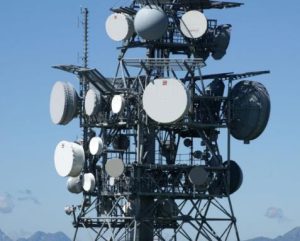What Are 3GPP Bands and Their Significance in Mobile Communication?
Introduction
3GPP bands are integral to modern mobile communication, defining the specific radio frequencies that cellular networks use to transmit voice and data across mobile devices globally. These bands, established by the 3rd Generation Partnership Project (3GPP), are standardized to ensure compatibility and efficiency in the telecommunications industry. This article delves into the definition, importance, and impact of 3GPP bands on mobile communication, providing a clear understanding of their role in connecting the world.

Understanding 3GPP Bands
3GPP bands are categorized into different frequency ranges, each designated for specific types of cellular technologies, including 3G, 4G LTE, and the latest 5G networks. The bands are critical for determining the operational capabilities of mobile devices and the extent of network coverage. For instance, lower frequency bands (such as 700 MHz) are known for their ability to cover vast distances and penetrate buildings effectively, making them ideal for rural areas. On the other hand, higher frequency bands (such as 2600 MHz) provide faster data speeds and higher capacity, which are essential in densely populated urban settings.
Each band is uniquely identified by a number, such as Band 28 (700 MHz) or Band 7 (2600 MHz). These numbers are not just arbitrary; they represent a globally recognized framework that helps in manufacturing mobile devices and deploying mobile networks that are interoperable across different regions and technologies.
The Significance of 3GPP Bands in Mobile Communication
Reliability and Compatibility: The standardization of 3GPP bands means that a smartphone manufactured in one part of the world can operate on a network in a completely different region, provided both support the same band. This global compatibility is crucial for international travel, global commerce, and cross-border communication.
Network Efficiency and Performance: By defining specific frequency ranges for particular tasks, 3GPP bands optimize the network for both coverage and capacity. This allocation ensures that data-intensive applications have enough bandwidth to operate smoothly, while also maintaining broad coverage for basic communication services.
Future-Proofing and Innovation: As new technologies like 5G emerge, 3GPP continues to evolve its band specifications. This ongoing development supports innovation in mobile technologies, facilitating new services such as augmented reality, Internet of Things (IoT) devices, and autonomous vehicles, which require reliable and fast mobile connections.
Regulatory and Economic Impact: The allocation and regulation of 3GPP bands also have significant economic implications. Governments auction frequencies to telecom operators, generating revenue and setting the stage for infrastructure development. This regulatory environment influences the strategy and operations of mobile network operators worldwide.
Key 3GPP Bands and Their Global Impact
Different regions prioritize different 3GPP bands based on their specific needs and regulatory environments. For example, Band 3 (1800 MHz) is widely used in Europe and Asia for LTE, while Band 71 (600 MHz) is a newer band in North America, specifically leveraged for its excellent coverage properties and capacity for 5G services.
Adoption of Specific Bands: The choice and adoption of specific 3GPP bands can influence the entire ecosystem of mobile communication, from the design of mobile devices to the deployment of mobile networks. This selection impacts how quickly and efficiently new mobile services are rolled out and adopted by the public.
Conclusion
The role of 3GPP bands in mobile communication cannot be overstated. They are the backbone of mobile connectivity, enabling seamless global communication, supporting economic growth, and fostering technological innovation. As mobile technology continues to advance, the strategic importance of these bands will only grow, influencing everything from global communication networks to local economic policies. Understanding and optimizing these bands is essential for anyone involved in the telecommunications industry, policy-making, or technology development.